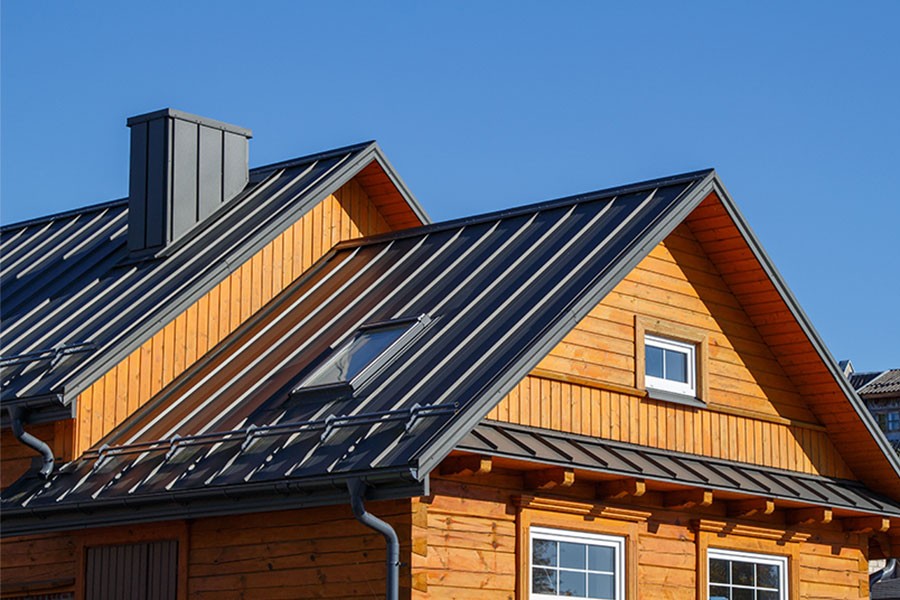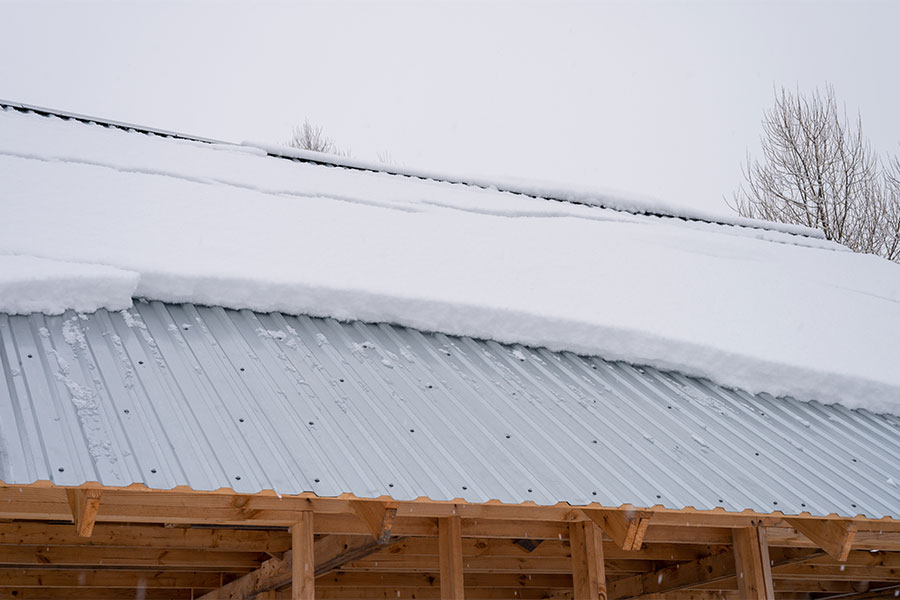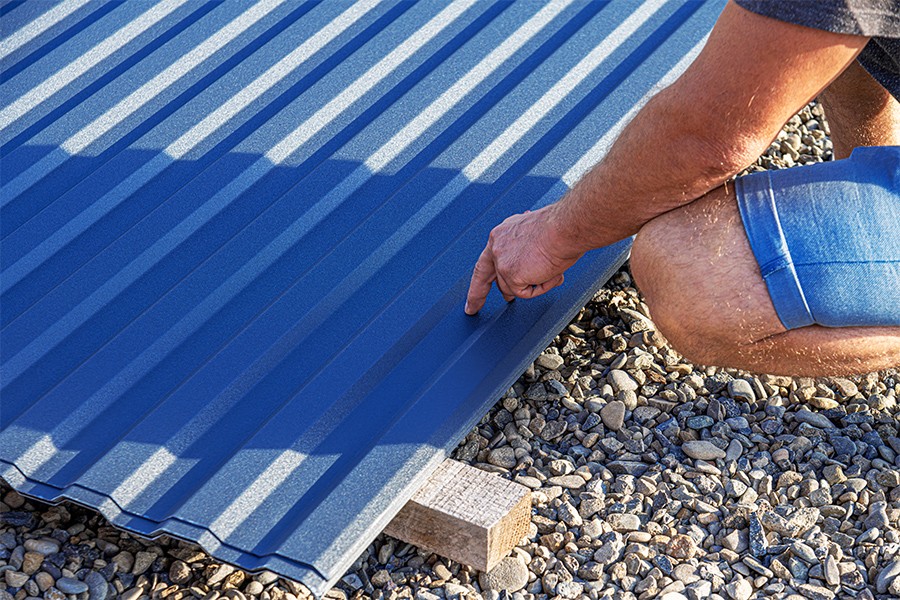Are you pondering the age-old question of whether to choose a sturdy metal roof or classic shingles for your property? Then you’re in the right place. We’re diving headfirst into the debate between these two roofing giants. After hearing both sides of the story, you’ll see for yourself why, in the end, metal roofing wins hands-down.
In the rugged beauty of Montana, the elements can throw just about anything our way. So, choosing the right roofing for your family’s home or commercial property is no small decision. That’s why we’re here to shed some much-needed light on the metal roof vs shingles conversation. Whether you’re a business owner looking to replace your building’s roof or building your dream home from the ground up, we’ve got you covered.
In this blog, we’ll walk you through the undeniable advantages of opting for a durable metal roof over traditional shingles. From longevity to energy efficiency to style, we’ll explore why metal, fittingly, has the high ground in the roofing world.
Factors to Consider When Comparing a Metal Roof vs Shingles
1. Durability
Renowned for its resilience, metal roofing stands up against the elements and the natural wear and tear of time—perfect for Montana’s climate. Metal panels maintain their structural integrity even in the face of our notorious winter conditions. Hail, ice storms, strong winds, and heavy snowfall don’t faze metal roofs. Additionally, metal roofs excel at retaining heat in colder conditions, keeping interiors cozy and reducing heating costs. Their efficient snow shedding also prevents the buildup of heavy snow loads that can compromise insulation. Overall, metal roofs are a reliable choice for climates with cold weather.
Also, in the heat of our intense summers, metal roofs offer excellent heat reflection properties. Contrary to common misconceptions, metal roofs do not attract heat but instead deflect most of the sun’s rays. Metal roofs can stay up to 100 degrees cooler than asphalt roofs. Bonus, metal roofs are highly-fire resistant, able to withstand fire longer than shingles without contributing to its spread or losing structural integrity. This often provides Montana property owners with a lot of peace of mind, given our wildfire-prone landscape.
Asphalt shingles have a hard time holding up to the extremes of Montana’s climate. Our frigid winters can cause shingles to become brittle, increasing the risk of cracks. This vulnerability can result in leaks and water seepage as snow and ice melt on the roof.
In our intense summers, shingles fail to stand up to the weather, as well. Unlike metal panels, asphalt shingles absorb rather than reflect heat. This heat transfers into buildings and can elevate indoor temperatures by up to 25 degrees. Additionally, shingles often weaken, curl, and crack under sun exposure, diminishing their ability to shield buildings from the weather.
Want to learn more about the metal roof vs shingles debate in hot or cold climates? Visit our blogs “Metal Roof vs Shingles in Hot Climates” and “Metal Roofs vs. Shingles in Cold Climates: Why Metal Roofs Reign Supreme.”
2. Longevity
Metal roofing’s durability plays into its quality of being long-lasting. On average, metal roofs last around 50 years before a replacement is needed, which is a 3-6 times longer lifespan than asphalt shingles. With metal roofing panels, you don’t have to worry about frequent repairs or replacing the panels after a rough bout of wind or snow. Metal roofs typically carry a manufacturer’s warranty of around 30-50 years, though they often last much longer. Because of its longevity, installing metal panels is an incredibly cost-effective roofing choice.
Asphalt shingles don’t last nearly as long as metal roof panels. Because they are made of layers of asphalt and granules, they wear down over time from exposure to the elements. Sunlight, changing weather, and moisture can cause shingles to degrade far faster than metal panels. Damage to shingles can include curling, cracking, and loss of granules. Because of this, asphalt shingles often need more repairs and replacements, making them less reliable in the long run and more costly than metal roofing.
3. Energy Efficiency & Eco-Friendliness
Metal roofing is highly energy-efficient because of how it’s installed and its materials. The U.S. Department of Energy discovered that the way metal roofing is attached allows for airflow underneath, which acts as insulation in winter and keeps heat from transferring in summer. With a metal roof, cooling costs can drop by 25%. Plus, if you choose pre-painted or solar reflective-coated metal roofing, you can boost this effect for even better energy efficiency. Picking a lighter color for your metal roof also helps—it reflects more heat than darker colors, lowering your energy bills during warmer months. Even without paint, metal roofs reflect heat better than asphalt shingles. In terms of materials, metal roofs are made from clean products and are 100% recyclable, with some steel roofs containing at least 25% recycled material.
In comparison, shingle roofs are known for their higher levels of pollution, waste, and lower energy efficiency. Asphalt shingle roofing projects can use hundreds of gallons of oil throughout the process, leading to unnecessary waste. Also, asphalt shingle roofs can contain harmful chemicals such as polycyclic aromatic hydrocarbons (PAHs) and arsenic. Both can pose risks to both human health and the environment. Additionally, the longevity of a roof is crucial for its energy efficiency. Shingle roofs only last around 20 years, requiring continual maintenance. Shingle roofs’ shorter lifespans results in increased long-term waste.
4. Aesthetic Appeal
Metal roofing is not only incredibly practical but sleek and stylish, as well. Metal roofing can be easily customized to your preferences, HOA needs, or architectural specs. Metal panels come in a wide range of paint options, allowing you to select a color that complements the style and look of your building. Along with the color, there is a wide assortment of panel profiles to choose from to fit your project’s aesthetic. Whether you favor the rustic feel of corrugated panels or the clean versatility of tuf rib panels, you can easily match your panel choice to your desired overall “look” for your property.
Asphalt shingles are less flexible in terms of appearance compared to metal roofing panels. They typically come in a limited range of colors and styles, which can restrict your options for matching the look of your home or building. This limited variety may result in a roof that appears uniform and less dynamic in appearance.
5. Maintenance
Caring for your steel metal roof is surprisingly low-maintenance. General maintenance includes using a gentle soap and water mixture to wash off any dirt from panels and clearing snow and leaves from the roof. For maximum protection, remember to recoat it every five to ten years with a fresh metal roof finish for longevity.
Unlike metal panels, asphalt shingles demand regular maintenance to combat issues such as curling, cracking, and granule loss due to sun exposure. Additionally, they need periodic resealing to prevent leaks, making them more prone to damage from weather elements over time. These maintenance requirements can result in higher long-term costs and more frequent repairs compared to the sturdy, low-maintenance nature of metal roofs.
Invest in the Best Option for Roofing: Metal’s Where It’s At
If you have specific questions about the metal roof vs single debate or which material is most fitting for your next residential or commercial metal roofing project, we’re here to help. At Great Northern Metal Company, our metal roofing and siding experts can make insightful recommendations to ensure you have all the information you need to increase your project’s long-term value. Get a quote today or give us a call at (406) 624-0435—we’d be happy to answer any questions!


